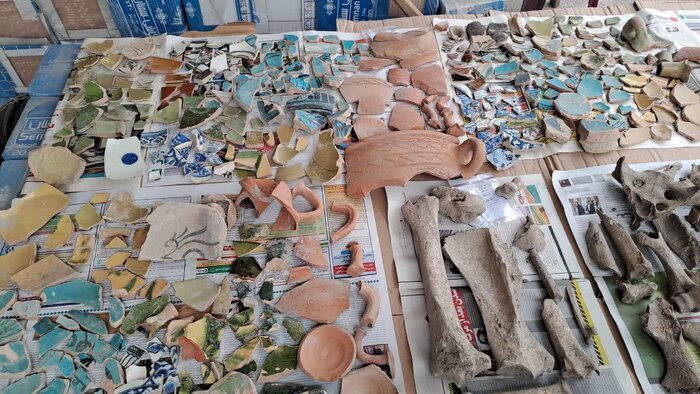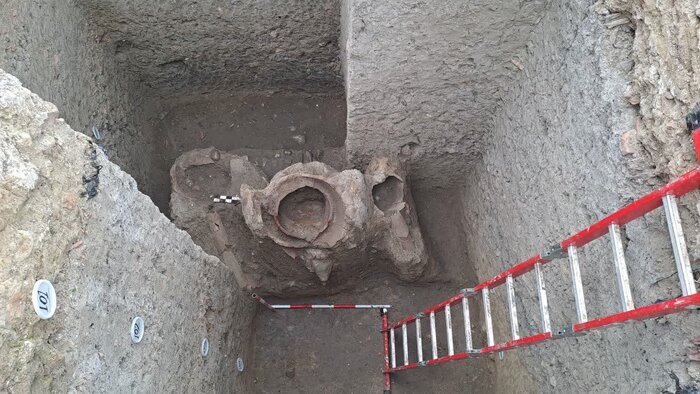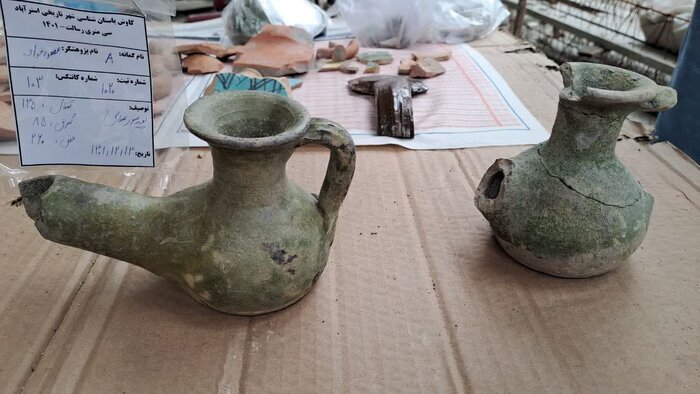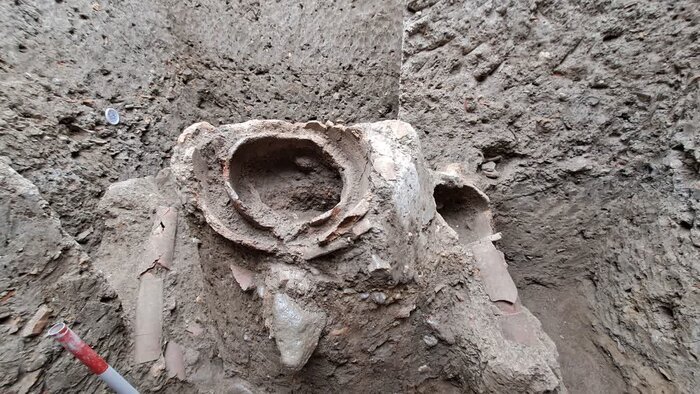Ancient relics discovered on construction site in northern Iran

TEHRAN – Archaeologists have uncovered the ruins of an ancient workshop and arrays of artifacts on a construction site near the Great Wall of Gorgan in northern Iran.
The excavated objects date back to various historical epochs, including Qajarid, Safavid, and Timurid eras. IRNA quoted Iranian archaeologist Habib Rezai as saying on Tuesday.
The excavated objects include potteries, metal and glass pieces, two copper coins, an oil lamp, metal ornaments and animal remains, the archaeologist said.
Also, the ruins of an industrial workshop and kiln and their related elements were found at the site, which may be one of the various industrial workshops once constructed on the outskirts of the ancient city of Astarabad, the archaeologist said.

Astarabad is situated along a small tributary of the Qareh River, 37 km from the Caspian Sea. The city, in existence since Achaemenian times, long suffered from inroads of the Turkmen tribes who occupied the plain north of the Qareh River, and it was subjected to incessant Qajar-Turkmen tribal conflicts in the 19th century. It was renamed Gorgan in the 1930s after being devastated by an earthquake.
Furthermore, the city is famed for being home to an ancient defensive wall of the same name (“The Great Wall of Gorgan”) which stretched some 200 km in length and was built to prevent the invasion of the northern tribes.

Also known as the Red Wall or the Red Snake, it is the longest ancient barrier between Central Europe and China, longer than Hadrian’s Wall and the Antonine Wall put together, and the third-largest wall in the world after the walls of China and Germany. However, most parts of the gigantic monument are still hidden underneath the surface through some segments that have so far been unearthed and even restored to their former glory.
The gigantic barrier is also more than three times the length of the longest late Roman defensive wall built from scratch, the Anastasian Wall west of Constantinople. The combined area of the forts on the Gorgan Wall exceeds that of those on Hadrian’s Wall, about threefold.

According to UNESCO, the Gorgan Wall is remarkable not only in terms of its physical scale but even more so in terms of its technical sophistication. To enable construction works, canals had to be dug along the course of the defensive barrier to provide the water needed for brick production. These canals received their water from supplier canals, which bridged the Gorgan River via qanats. One of these, the Sadd-e Garkaz, survives to 700 m in length and 20 m in height but was originally almost one kilometer long.
The Gorgan Wall and its associated ancient military monuments provide a unique testimony to the engineering skills and military organization of the Sassanian Empire. They help to explain its geographic extent, from Mesopotamia to the west of the Indian Subcontinent, and how effective border defense contributed to the Empire’s prosperity in the interior and its longevity. These monuments are, in terms of their scale, historical importance, and sophistication, of global significance.
AFM
